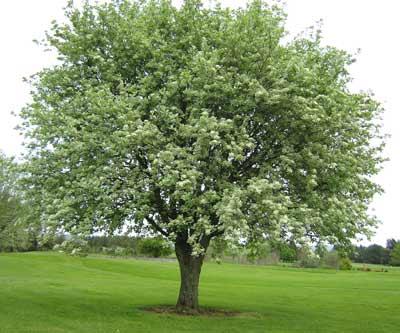Whitebeam Fionncholl (Sorbus)

Six species of Sorbus are native to Ireland; five of these are whitebeams, and the sixth is rowan (see January 2008 issue of Village magazine). Whitebeam is a small tree which is now quite rare in the wild. Many whitebeam species from Asia and Europe have been planted in towns and parks and along our roadsides.
However, to find a native tree you have to search with some diligence. It is most common on Limestone soils in the south of the country where it has survived mainly on steep hillsides and other areas which have escaped grazing.
The whitebeam is well suited to these dry Limestone soils as the covering of tiny hairs on the underside of the leaves reduce water loss. Like rowan, whitebeam produces beautiful yellowish-white flowers in May and it sports bright red berries in autumn.
While the fruits of whitebeam are edible they are not very tasty but are popular with birds and squirrels.In the tree list of the Brehon Laws it is ranked in the “lower division of the wood” along with blackthorn, elder, spindle, arbutus, aspen and juniper. This suggests that the species had little economic importance in ancient times. Unlike its close relative the rowan, whitebeam does not feature in place names or in our folklore, which lends further support to the theory that it was a minor tree in ancient times.
The ancient Irish called the whitebeam Fionncholl meaning white-hazel as its leaves resemble hazel and are white on the underside. Its pale coloured timber is very hard and was traditionally used to make small furniture pieces such as stool legs and also to make cogs for machines. When sowing whitebeam, the seed should be treated in the same way as the related rowan seed. The tallest tree is 20 metres.
John Mc Loughlin
Tree Council of Ireland
